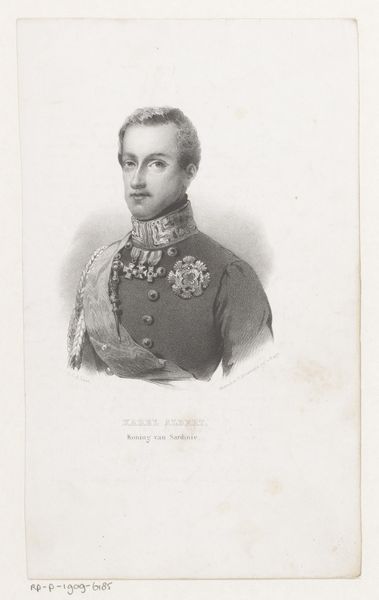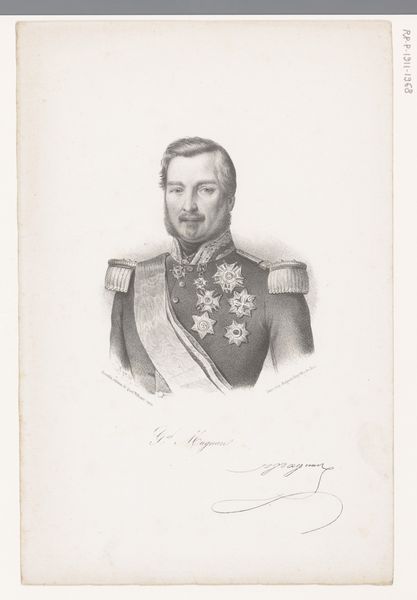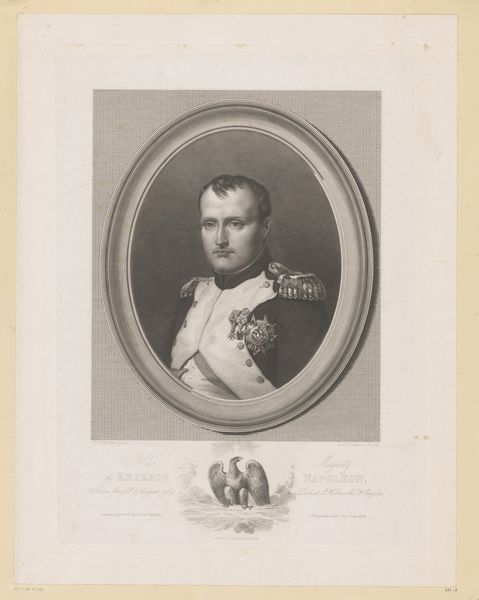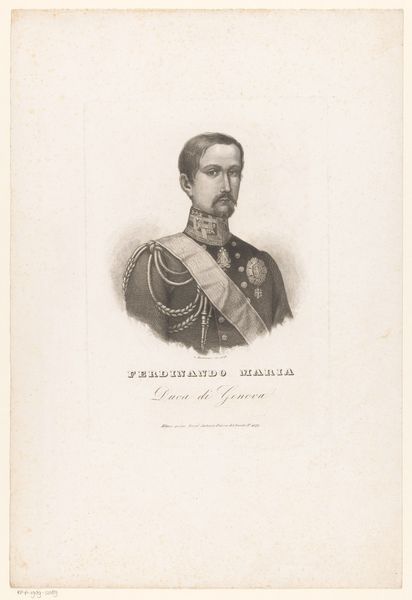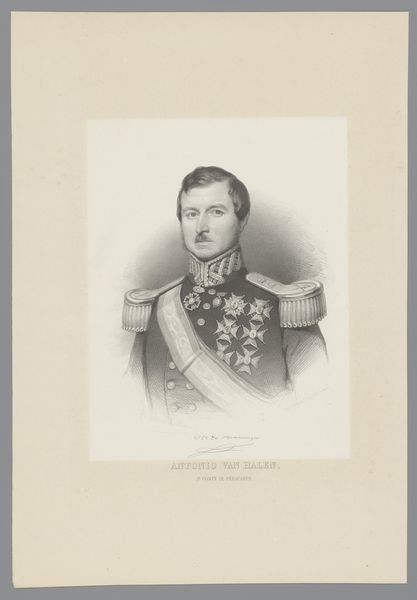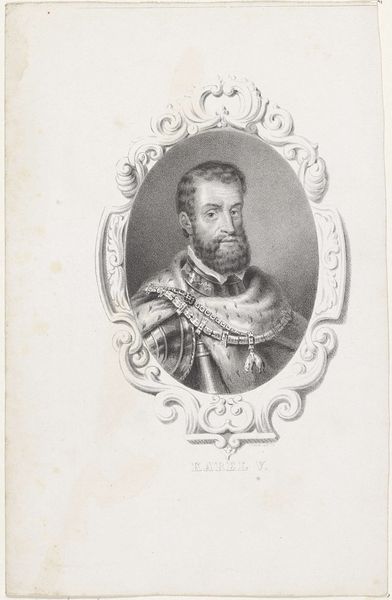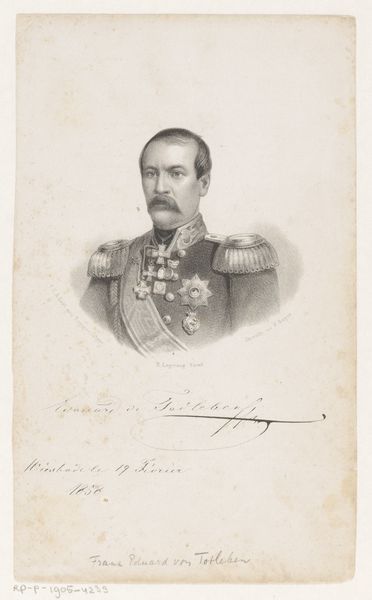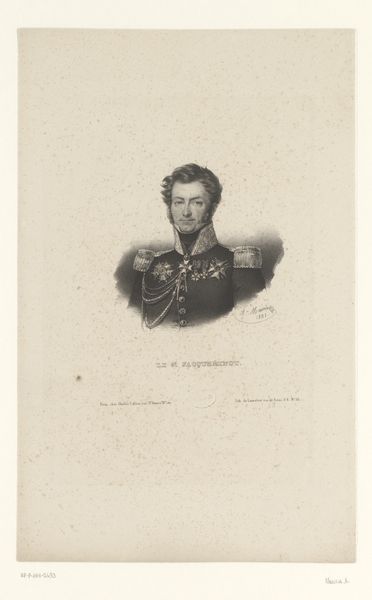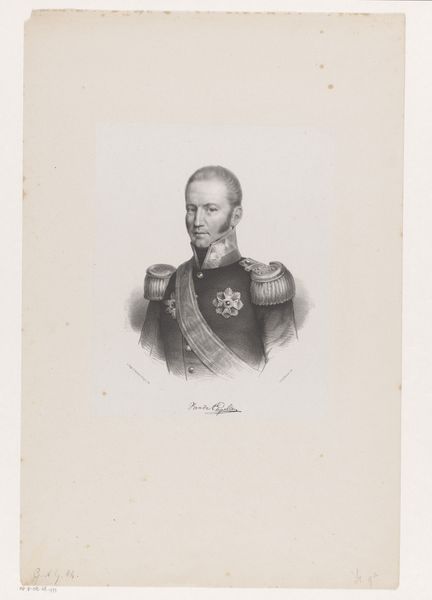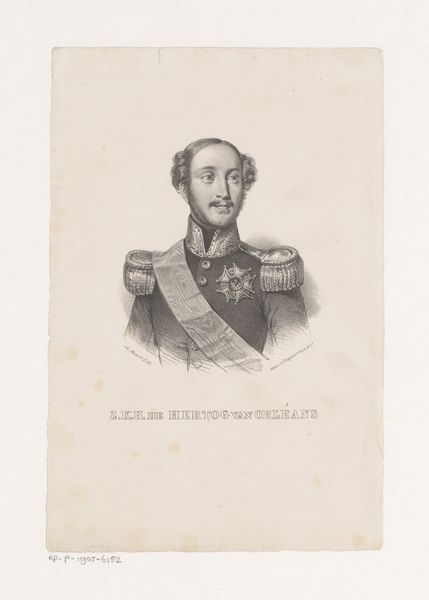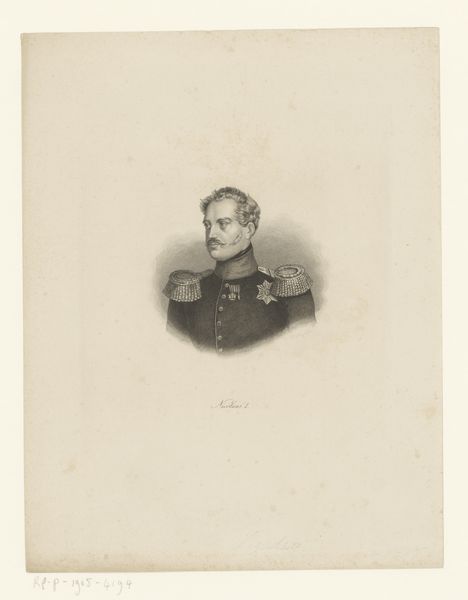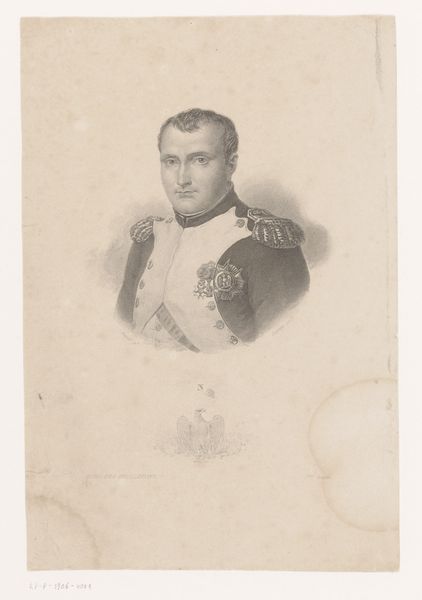
Portret van mogelijk Ferdinand II, koning der Beide Siciliën c. 1833 - 1850
0:00
0:00
print, engraving
#
portrait
# print
#
romanticism
#
history-painting
#
academic-art
#
engraving
#
realism
Dimensions: height 225 mm, width 150 mm
Copyright: Rijks Museum: Open Domain
Editor: Here we have a print from between 1833 and 1850, titled "Portret van mogelijk Ferdinand II, koning der Beide Siciliën" by Carel Christiaan Antony Last. It looks like an engraving, a portrait of Ferdinand II. He's in full military regalia... a powerful image! What story does this piece tell you? Curator: This engraving provides insight into the constructed image of European royalty during the mid-19th century. The sharp detail afforded by engraving allows for the meticulous rendering of Ferdinand's uniform and medals, showcasing the symbols of power and status so vital to maintaining authority. It wasn't merely about likeness; it was about propagating an ideal of kingship. Do you think the public at the time saw these portraits as accurate representations? Editor: Perhaps, but I imagine there was some idealization, especially in a formal portrait like this one. It feels very...official. Curator: Precisely! Engravings like these circulated widely, shaping public perception and reinforcing the power structures of the time. They served as a form of visual propaganda. Note also how the print's availability hinges on a publishing house: how does its wide circulation via "van Lier frères" change how we understand its significance today? Editor: That's fascinating! I hadn’t considered the role of the publisher in shaping its meaning. The engraving isn't just a portrait, it’s also a carefully manufactured representation of power distributed to a wide audience. Curator: Exactly. Examining its circulation tells us as much as the image itself about the public role of art in solidifying power in the 19th century. Editor: I will definitely think about the institutional factors surrounding art making in our modern era! Curator: A great insight to take with you! It also made me appreciate how much portraiture functioned as a socio-political tool back then.
Comments
No comments
Be the first to comment and join the conversation on the ultimate creative platform.
